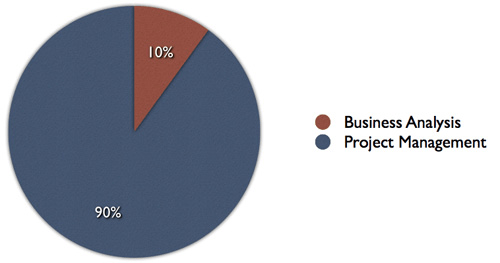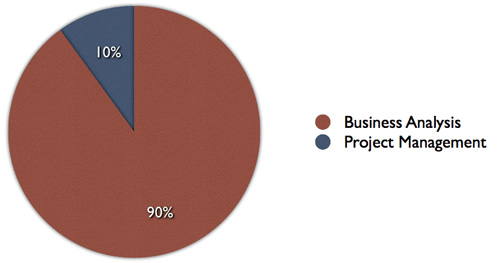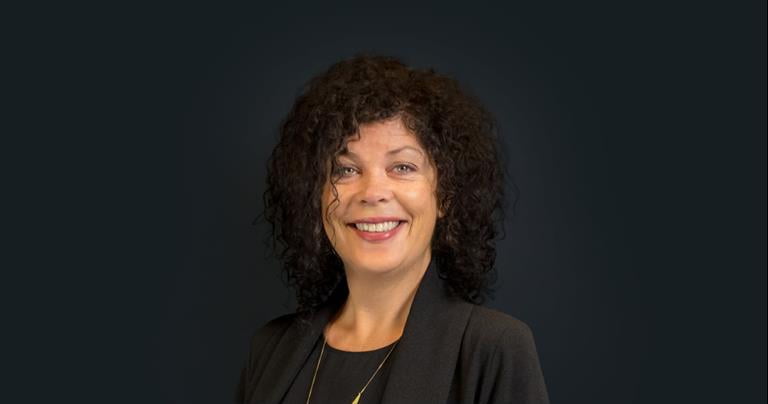In the first part of this post, I broadly discussed how we think about career transitions in the context of our views on performance management here at Habanero. In this segment, I'd like to introduce in detail the process that we use with our employees to help them architect their career plans or transitions.
Career Planning Process

Explore and confirm strengths
During this initial brainstorm session, we walk through an exploration of strengths. I usually ask people to do their own homework and come prepared to speak to their strengths. We sometimes use tools like a mind map or strength finder reports to find out what people are doing when they feel happiest at work. This session can often last a couple of hours to really explore and pick apart the activities that give a person energy and excitement.
Some good trigger questions can include understanding the nature of the work a person is doing while they are "in the zone" at work and to pick up any patterns or consistency in the scenarios. For example, is a person only excited when they are involved at the visioning stage? Or, are they really stoked when they see their solution or design launch for real users and hear their feedback? Do they prefer solo or team activities? All of these questions help to isolate the areas that align with their strengths.
Define current state
A key step in heading in a new direction can be identifying what it is that you actually do today. If your organization uses a time tracking tool with reporting, a pie chart of how a person's time has been logged over the past year can stimulate a lot of conversation. If, for example, you are a business analyst but spend 90 percent of your time doing project management work (which you don't love), it could explain why you feel burnt out or unexcited about work.

Identify future state
The next step involves imagining yourself in a future or ideal state — what are you doing and in what portions of your time? The future state could involve the same activities as today ... but as in the above example, could be 10 percent project management and 90 percent business analysis. Or, it may involve adding new categories to the pie to represent areas of desired growth.

This stage builds on the work done to identify strengths and involves a lot of listening and probing to surface what the future could look like. Some questions that could influence the pie can include:
- What type of work are you doing?
- What role would you like on projects?
- How are you sharing your experience and knowledge with the team?
- What types of relationships do you foster? (i.e., mentorship, leadership)
Create a plan to get there
Working back from the future state, this step involves identifying the supports required and skills needed to arrive at the future state. The gap between the current and the future may simply be a matter of changing up how a person is resourced on projects or bolstering some skills, but for a significant career transition it could involve developing a whole new skillset. Managing the process to get from the current "pie" to the future state may be something that a person can navigate mostly on their own but to be successful it requires the support from a variety of people within the organization, from their performance manager to their peers.
Examples of supports include:
- Connecting with potential mentors or peers
- Identifying training opportunities
- Starting to evolve roles on project work
- Obtaining professional designations
- Identifying external networks
- Setting up leadership or networking opportunities outside of Habanero (like speaking at a conference)
Sometimes the plan can include changing performance managers to better align with future goals. This isn't always a bad thing and a fresh perspective can often reinvigorate engagement!
Validate the plan
In this final step we work with the employee to take ownership of the plan by documenting it and communicating it to others it may affect (i.e., team members, sales team, resource manager). This part of the process is critical in validating whether the plan is a good fit for the individual: does the plan fit with Habanero's goals? Do we have the type of projects that can support it? And how long is realistic to transition from today's role to the future state? Overnight or over the course of a year?
What do our folks say?
People who have participated in this process have been keen to share their enthusiasm for it:
"I find it very helpful when thinking about what you want to focus on in the next quarter/year (sometimes it's difficult to come up with a plan without knowing the destination)"
"It creates a shared understanding with your performance manager as to where to you want to be and brainstorm ideas on how to get there"
"I love how it focuses on things that motivate you and things you love to do"
In a perfect world, we come away from this process with one happy, healthy engaged employee, ready and raring to take on the next phase of his or her career. But one potential outcome of this process is that we may find that the ideal world and role our employee sees for him or herself does not exist here at Habanero. And that's actually okay — if we can help to support our employees by finding the right career path, I think that benefits everyone.






